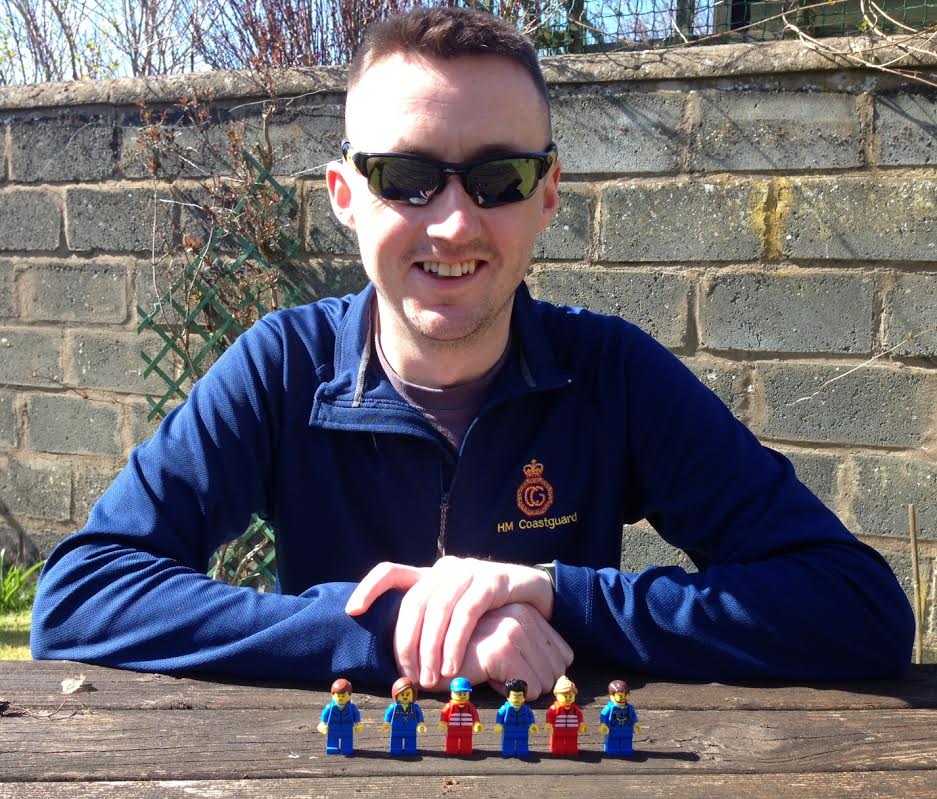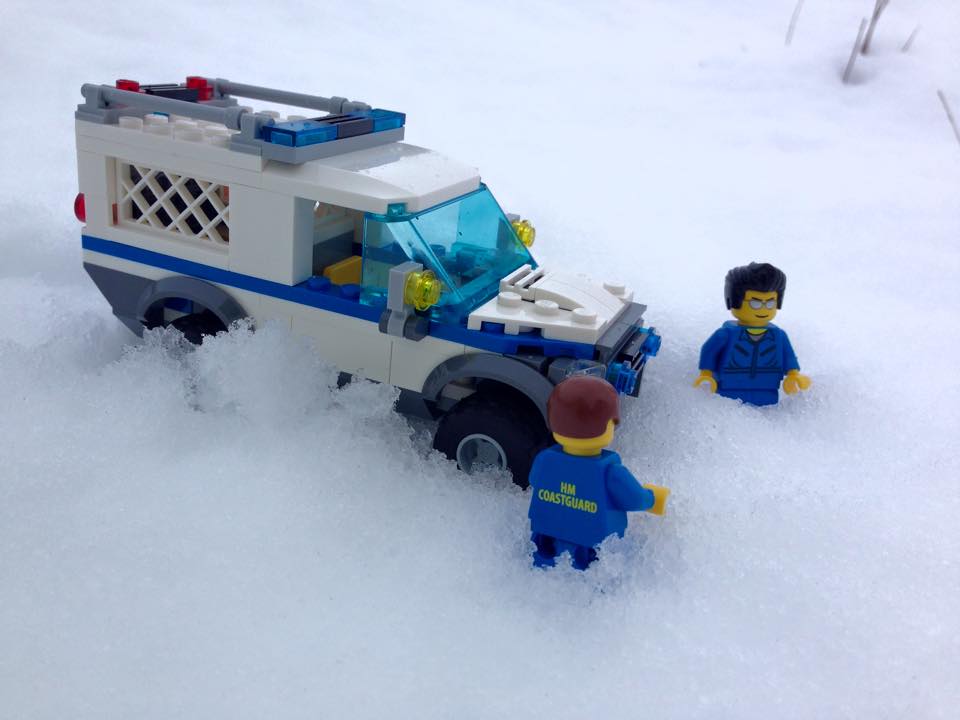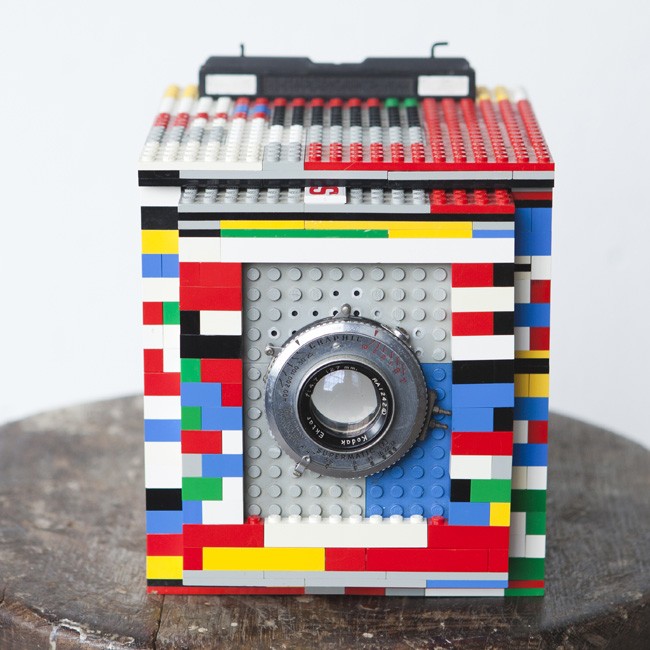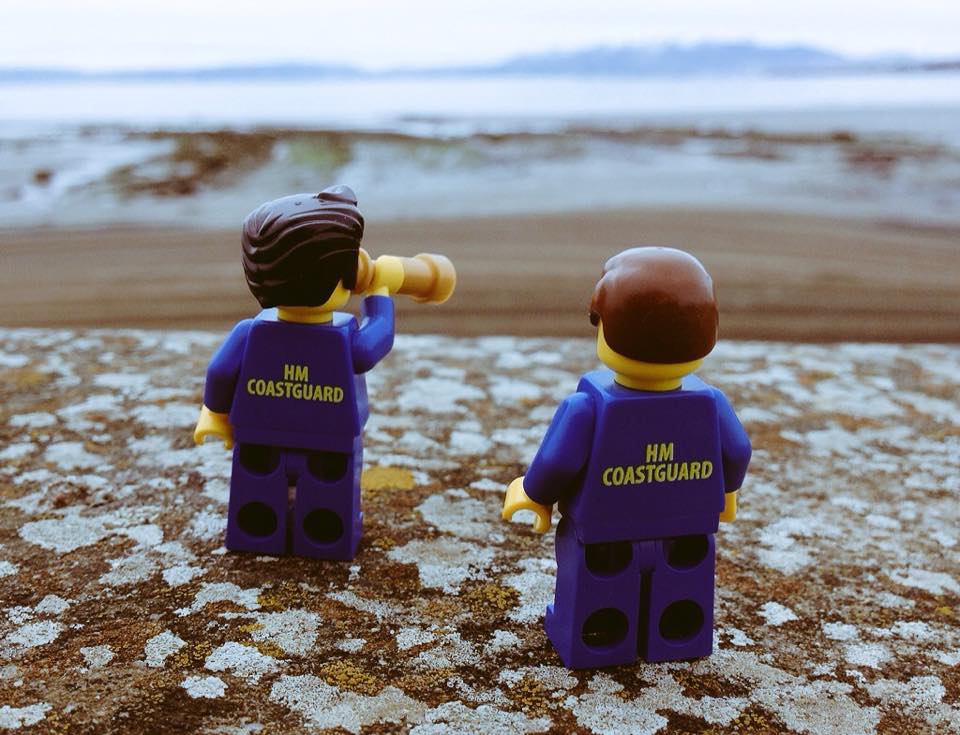
From getting kids interested in building things, to injecting joy into the lives of grown-up collectors, Lego does a lot of really great things.
Saving lives isn’t usually one of them.
Try telling that to Kevin Paterson, a 31-year-old Lego fan, who just so happens to be a volunteer Coastguard Rescue Officer with H.M. Coastguard Search & Rescue in Ayrshire, Scotland. Drawing on his love of all things Lego, along with his knowledge of social media, Paterson has created a minifig-based safety campaign featuring the world’s tiniest Coastguard Rescue Team.
And it’s a doozy.
Like many adult Lego fans, Paterson grew up as a fan, only to find his interests diverted elsewhere during his teenage years.
“My interest was rekindled last year with the release of the Arctic Exploration sets as part of the Lego City collection,” he tells Power of the Brick. “Within a fortnight I had purchased the entire Arctic collection and all the happy memories of building Lego as a kit came flooding back. I was totally hooked.”
It was then that he started thinking about how Lego could be used to help promote other things close to his heart: namely coastal safety and the work of the Coastguard Rescue Service.
Considering its importance, the strange thing about the majority of safety messages is just how little we pay attention to them. There is a feeling of “it could never happen to me” possessed by many people, and this can make it tough to create messages which resonate with audiences.
Maybe Lego could help, Paterson figured.
“This idea quickly developed and expanded into the ‘Wee Guys,’ a.k.a. the world’s smallest Coastguard Rescue Team,” he continues. “The basic concept of the project is to promote coastal safety and the great work being done on a daily basis by volunteer Coastguard Rescue Teams around the country, but in a fun and unique way. It’s my hope that parents will sit with their children on their computers, tablets and smartphones and enjoy the ‘wee guys’ together, while everyone learns more about staying safe at the coast.”
The plan worked. The campaign spread like wildfire on social media upon its release; finding more eyeballs and generating more “shares” and “likes” than any coastal safety message could reasonably be expected to. It wasn’t just members of the public who were inspired, either.
“Having seen the followers that @CoastguardTeam [was] getting on Twitter, and being a big kid [at heart], I thought our team could follow suit,” says a spokesperson for Bay Search & Rescue in North West England, also speaking with Power of the Brick. They created a series of photos such as the one below, recreating their team in brick-form to show off some of the work they do on a regular basis.
Meanwhile, elsewhere in Scotland the Edinburgh Police Division dreamed up a series of Lego-based photos for their social media page, emphasizing the importance of properly keeping homes secured. According to a member of the team, the success of the campaign is due to the fact that Lego is a “universally recognisable” brand which resonates with the public.
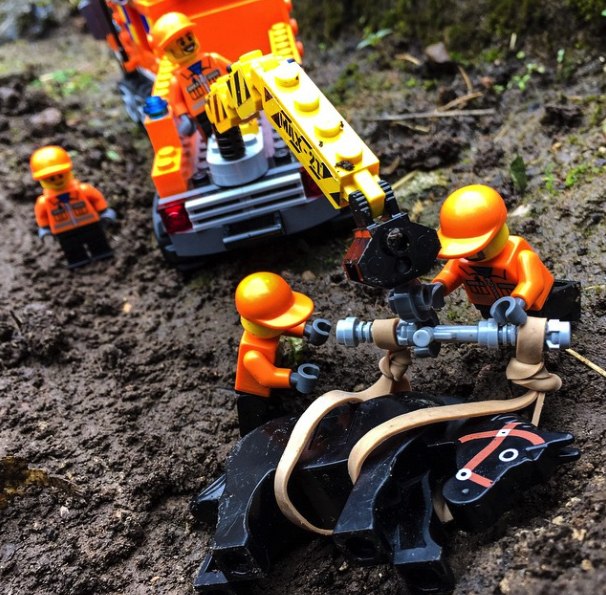
“I personally think that any way to get advice into the public domain about staying safe at the coast can only be a good thing,” Kevin Paterson says. “The [H.M. Coastguard Search & Rescue] project is fun and quirky. Everyone loves Lego and it’s something that people will remember. Ultimately, if even one person makes the right decision or remembers who to call in a coastal emergency because of this project, then it has been worth the time and effort.”
It’s hard to disagree there.
